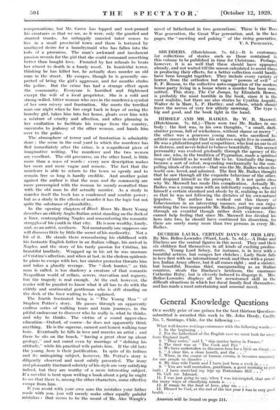HIMSELF AND MR. RAIKES. By W. B. Maxwell. (Hutchinson. 7s.
6d.)—There were two Mr. Raikes in one body : the first was, in his own thoughts, " a small, dark, sinister person, full of wickedness, without shame or mercy " ; the other was a generous young man, who sacrificed his artistic career in order that his relatives might live in comfort. He was a philanthropist and sympathizer, who lent an ear to all in distress, and never failed to behave beautifully. This second personality was evolved gradually through the agency of the first one, who, in the tradition of Pygmalion, made a spiritual image of himgelf as he would like to be. Gradually the image became a sort of robot, responding mechanically to the com- pelling ideals of its creator—that was the Mr. Raikes whom the world saw, loved, and admired. The first Mr. Raikes thought that he saw through all the exquisite behaviour of the other, and despised himself as the prompter. It is not quite clear why Mr. Maxwell has made this complication. Actually Mr. Raikes was a young man with an inferiority complex, who set himself a certain standard and abode by it, realizing as he did so that he was not following the dictates of his own natural impulses. The author has worked out this theory of behaviourism in an interesting manner, and we can enjoy Watching the two inseparable Mr. Raikes; jostling-oireanother through an eventful though rather drab existence. One cannot help feeling that since Mr. Maxwell has divided his hero into two, he should have continued his dissection; for there are surely many more than two persons, in every. Mr. Raikes.








































 Previous page
Previous page